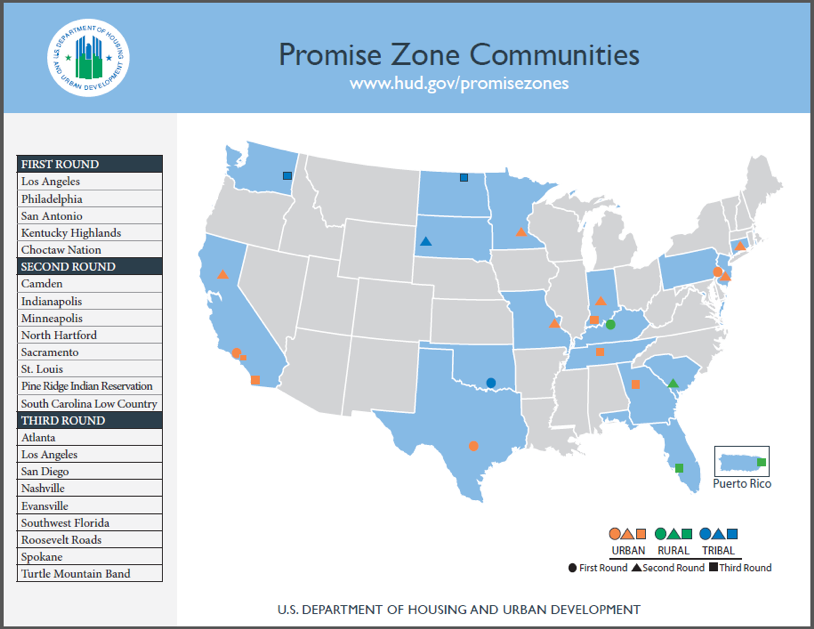Mobility Managers Partner with Family Justice Center
- Author: Laurel Schwartz
- Date: July 11, 2023
In 2015, social worker Kim Garrett worked at the victim’s services unit at the Oklahoma City Police Department. After seeing…
Promise zones face a wide spectrum of quality of life issues, including a lack of educational opportunities and affordable housing, higher levels of crime, and economic disinvestment. Transforming these Promise Zones require holistic, place-based approaches that leverage local partnerships to meet specific community needs.
In 2014, the Office of Housing and Urban Development (HUD) announced an initiative to designate a number of urban, rural and tribal communities as Promise Zones. Promise Zones are high-poverty communities in which the federal government assists local leaders with increasing economic activity, improving educational opportunities, leveraging private investment, reducing violent crime, enhancing public health and addressing other priorities identified by the community. To date, 22 urban, rural, and tribal Promise Zones have been chosen through three rounds of national competition, in which applicants demonstrated a consensus vision for their community and its residents, the capacity to carry it out, and a shared commitment to specific, measurable results.

Image credit: U.S. Department of Housing and Urban Development
The Promise Zone designation helps communities address their needs in a holistic and comprehensive manner. Alongside HUD, twelve federal agencies participate in the Promise Zone program including the Department of Agriculture, Education, Health and Human Services, and Transportation. Through technical assistance, received priority access to federal investments that further their strategic plans, and five full-time AmeriCorps VISTA members to recruit and manage volunteers, local stakeholders can realize their vision for improving quality of life in their communities.
Opportunities for mobility management in Promise Zones
Transportation’s role in economic development is well documented. Reliable and efficient choices to get around a community underpin economic vitality by ensuring access to housing, jobs, education, healthcare, supermarkets, and social services. Studies have shown that reducing commute time is a significant factor in escaping poverty. In Promise Zone communities, local stakeholders frequently highlight the lack of workforce readiness, economic activity, high-quality education, and poor access to health and wellness services. With the multitude of local needs, coordination amongst transportation, health-care, education providers and the private sector is necessary to bridge the gap between these services and Promise Zone residents.
As a result, solutions to these challenges must be interdisciplinary, multi-modal, coordinated, accessible, and sustainable in nature. Mobility management makes sense in Promise Zone communities because mobility management supposes:
Mobility managers are uniquely suited to coordinate transport in promise zones. Mobility management reaches a diverse array of stakeholders, including people with disabilities, older adults, and individuals of low income. Plus, their access to more than 80 federal programs to leverage transportation services to fund transportation in Promise Zones (FTA Coordinating Council on Access and Mobility) can help communities share-costs across agencies, administer services across policy and regulations, deliver service, and monitor performance accountability for continuous improvement.
Some examples of how transportation has played a role in the development of promise zones:
As seen above, Promise Zones underscore the need for a holistic approach to community revitalization efforts. Even in non-designated communities, the same tools are available to local partners across the United States. With the assistance of mobility managers, tailored solutions that overcome traditional and inefficient sectoral silos can be crafted to meet the unique mobility needs of a community.
Have more mobility news that we should be reading and sharing? Let us know! Reach out to Sage Kashner (kashner@ctaa.org).
Please confirm you want to block this member.
You will no longer be able to:
Please note: This action will also remove this member from your connections and send a report to the site admin. Please allow a few minutes for this process to complete.